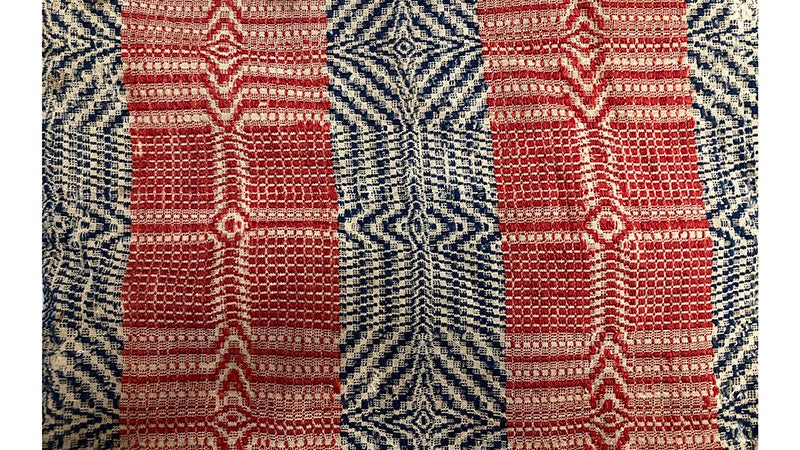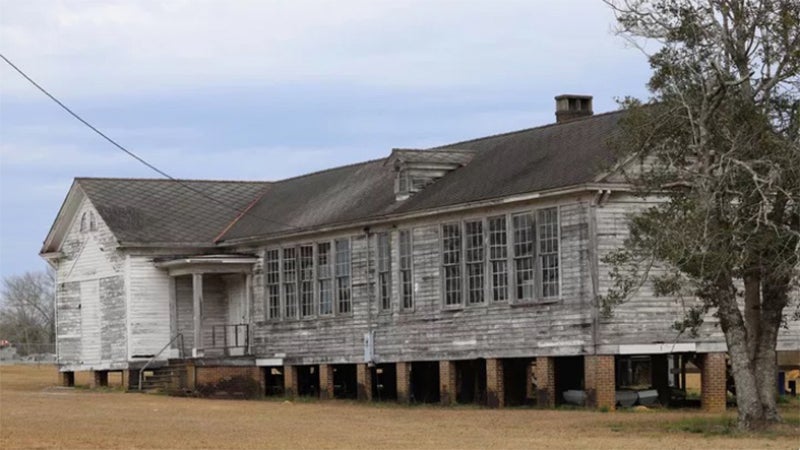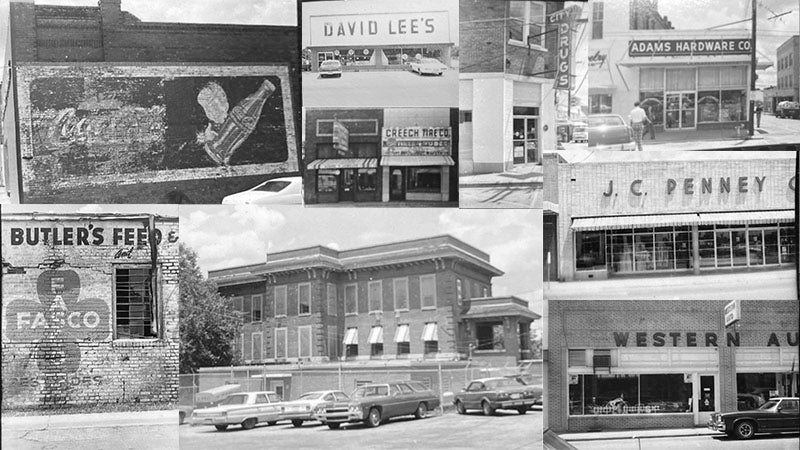Trunk treasures help families Remember When
Published 2:20 am Saturday, September 24, 2016
Back a few years ago, The Judds recorded a song, “Grandpa, Tell Me ‘Bout the Good Ol’ Days…Take me back to yesterday…” A charming children’s book writtenby Elena Castro, Barbara Flores, Eddie Hernandez and illustrated by Mary Ramirez is titled “My Grandmother’s Memory Trunk.”
 Through the years in my career and in my association with the Three Notch Museum and the Covington Historical Society, I have had the opportunity to come across a number of grandmothers’ trunks. So let’s devote this column to a description of inventory that might be found in a grandmother’s trunk of the 1800s and the early 1900s.
Through the years in my career and in my association with the Three Notch Museum and the Covington Historical Society, I have had the opportunity to come across a number of grandmothers’ trunks. So let’s devote this column to a description of inventory that might be found in a grandmother’s trunk of the 1800s and the early 1900s.
Many a wedding dress might be tucked away in a trunk. Wedding dress shop owners might say that the ivory wedding dresses are often as popular as the white ones. Maybe this is because over time, white dresses stored in trunks turned off- white or ivory, and brides often want to wear the wedding gowns of their mothers and grandmothers. The ivory dresses are reminiscent of the older ones. I remember an occasion in Andalusia where Jonnie Dee Riley walked down the staircase of her historic family home on East Three Notch Street on her wedding day in her mother’s and grandmother’s vintage wedding dress to wed Terrell David “Ted” Little. I’ll bet it was stored for years in a trunk!
Handmade quilts artfully designed are keepsake items passed down to the next generation. Lace shawls, christening gowns, tatted and crocheted doilies, woven bed covers, and lap robes, all like quilts, can be found in trunks. While visiting a relative over in Georgia, my daddy’s cousin brought down out of the trunk in the attic two batiste blouses with tiny tucks and lace trim around the high necks for us to see. A note was attached that said, “I have carefully saved these blouses for my granddaughters to see one day, these favorite pieces of clothing that their grandmother once wore when she was young and courting their grandfather!” They were just exquisitely made.
Ambrotypes, which were introduced in the 1850s in the United States, were photographs kept in folding leather embossed cases. Many of these were taken along when soldiers of the War against Northern Aggression went off to war. One movie portrayed a soldier keeping his ambrotype of his girlfriend in a breast pocket next to his heart. The bullet would have killed him had it not been for the thick ambrotype case.
Personal items can often be discovered among items in a trunk such as hat pins worn by ladies, spectacles or eyeglasses with wire rims, silver button hooks and shoehorns, brocade purses, silver dollars, skeleton keys, and silver initialed lockets with small portraits inside.
Many a gold pocket watch has been preserved in “memory” trunks. My father’s grandfather had worked as a railroad conductor on the Nashville to Chattanooga route for 50 years at which time of his retirement, he was presented an engraved pocket watch that was passed down. An interesting gold award metal with fancy inscription dated 1907 from the Darlington School Debate Team in Rome, Ga., was tucked away in a trunk for many years in horse and buggy days before it was passed along to the younger family members.
Family Bibles of the 1800s served double-duty not only as the family Bible but also as a warehouse of the family’s history. Designed to withstand the abuse of generations, these thickly bound volumes once sold around the countryside to pioneer families by the rolling stores were often placed in “grandmother’ s trunk” for safe-keeping. Recorded therein include notations such as babies being “borned” and loving mother “departed this life on the morning of July 10, 1890, age 38 years, 6 months,and 4 days, leaving her husband and 3 little girls to mourn her loss.”
Once a family Bible was given to my father with a written request from the grandfather who purchased and kept the Bible over a long period of time. “It is my desire that this family Bible remain in the possession of the youngest male in the family for one hundred years.” Daddy took that Bible to Atlanta to have it bound securely. It is a family treasure now with the middle page section of births, deaths, and marriages laminated. I have noticed recently that family Bibles lost to families can even be purchased on line, most likely Bibles that have surfaced in antique shops, from estate sales, and in homes of deceased citizens where there are no descendants – probably taken from “grandmother’ s trunks.” That particular family Bible did, by the way, contain between the pages a lock of Auburn-colored hair, a pressed flower, and a military uniform badge, GRANT. That should cause some interesting discussion among Southern families around today’s edition!
Almost unmentionable are belongings that were important to the turn-of-the century ladies who have placed their corsets in the trunks. My grandmother, who wore her corset on her deathbed ,is probably turning over in her grave at the thought of my bringing up that subject! “Lordy, it just ain’t fitnin’!” I do possess one of those heavy cardboard-like photos of Aunt Matt of Atlanta whose legacy is that she wouldn’t allow the young man of medicine to examine her even though she had a severe stomach ache, because she would have to remove her corset! I guess she died as a result, because I’ve been to her grave at Oakland Cemetery. Oh, yes, and don’t let me forget,
Aunt Matt related every occasion in life by two major events – the Great Fire of Atlanta and Sherman’ s March to the Sea.
“Let me see,” she would say, “That Bennett couple got married six years after Sherman’s March to the Sea !” Or “Uncle Joe died 10 years after the Great Fire of Atlanta!” And “We purchased that parlor set five years before the Great Fire of Atlanta!” Margaret Mitchell is not the only person of Atlanta heritage to have post-war Georgia stories!
Old letters and diaries are often found in old trunks. These offer valuable history of the times. Many letters are correspondence from the battlefield and wind up in university and state departments of archives and history. Love letters detail the deep feelings of the writers, and a lot can be learned about the daily activities that were prevalent in those certain eras of history.
The Three Notch Museum recently received some artifacts, a stack of old postcards, from the family of a former Andalusian. One in particular reads, “GREETI NGS from ANDALUSIA.” There are some pictures of old homes, buildings, and businesses on the front – a real treasure trove for the photo and postcard collection at the museum.
After the old trunk generation, it seems that my mother’s generation kept keepsakes in cedar chests at the foot of her bed. In 1965, Sullivan Furniture Company which was located
on South Cotton Street presented all of the female graduates with a small or miniature cedar chest which ended up storing my college letters. This was a promotional gift to encourage the young women to purchase a cedar-lined hope chest which some did.
Gloria Short told me that a grandmother’s trunk was stored in the barn of her grandparent’s homeplace. By the time she got old enough to go through that trunk and appreciate the contents, the rats had eaten holes in the battle flag and other mementoes that would be priceless today !
Old newspapers were common valuables to keep in trunks. Many people in the late 1930s would have probably kept the front page headlines of the abdication of Prince Edward to the British throne when he broke English tradition and married Wallace Warfield Simpson, a commoner. The armistice at the end of World War I in 1918 would have been popular newspaper headlines to hold on to for posterity!
A favorite book or even a child’s book might have been packed away in a trunk. Perhaps the 1900 book by Gelett Burgess, “Goops and How to Be Them” would be something to treasure and recall in years to come. Who would ever want to forget these words read to children in their high chairs – “The Goops, they lick their fingers, And the Goops they lick their knives; They spill their broth on the tablecloth, Oh, they lead disgusting lives! The Goops, they talk while eating. And loud and fast they chew; And that is why I’m glad that I am not a Goop, are you? The Goops are gluttonous and rude, They gag and gumble with their food; They throw their crumbs upon the floor, And at dessert they tease for more; They will not eat their soup and bread, but like to gobble sweets instead. And this is why I oft decline when I am asked to stay and dine.” (TABLE MANNERS I AND II.)
My mother, Marge Brunson (Bass), and her next door neighbor and growing up friend Ethel Mae Holley (Walker) once went through an old trunk in the attic. They both came down, they were children at the time, with scarlet fever! Mother said it was from all the dust!
Louisa May Alcott who wrote “Little Women” is credited with saying, “A house needs a grandma in it!” I would like to add to that quotation by saying, “...and a home needs a grandmother’s trunk in it so their loved ones can one day REMEMBER WHEN!”





